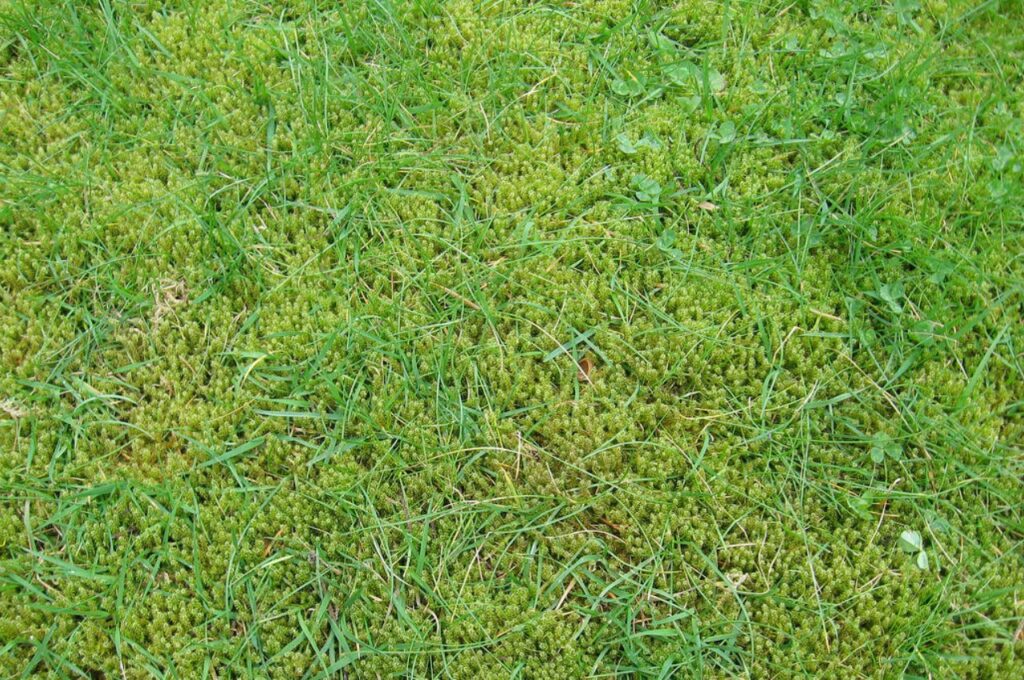The invasion of moss in turf seems to be on the increase. Poor surface drainage has always been considered responsible for the invasion of mosses, yet many sports pitches have been troubled by the incursion of mosses in spite of their intensive care programs of scarification, aeration and soil modification and over seeding with new grass seed.

Perhaps Turf Managers are not applying the chemical controls accurately enough for a positive response, or are the chemical controls being applied at the wrong time in the moss plant life cycle? Are the moss plants becoming more resistant to the available chemical controls?
There is one point that does spring to mind – there are two periods of growth each year. The first period is in the spring, and then following the compaction of the soil surfaces during use over the summer. At this time of the year, turf managers begin cultural operations in earnest, including thorough scarification. If the germinating moss spores are not controlled, prior to scarification, the mosses will spread by vegetative reproduction and produce another crop of spores. These will remain dormant, protected by actively growing turf through any dry spell until the autumnal rains occur. Once again the moss spores will germinate and moss growth will be rapid while the soil is still warm.
Most turf managers will budget for recurring moss invasion each year; but not for a second crop in that year. Again it is interesting to note that after a very dry summer, moss growth can be seen as soon as the soil becomes moist again.
Control of Moss – Cultural Practices
Certain mosses are encouraged by lack of subsoil drainage, a compacted or water-saturated surface, or excessive rolling. Excessive moisture in the surface soil, if only a temporary winter phenomenon, may be relatively unimportant, but if the moss becomes established, the porosity of the surface must be improved by aeration, scarifying and the application of sharp sand, or in some cases Charcoal, Gypsum or Lime.
Soil impoverishment leads to scanty covering of grass and the establishment of quite different moss species. Fertilizer applications – Sulphate of Ammonia at 9 grams to 18 grams per sqm, to which some Ferrous Sulphate or Super-Phosphate, both of which scorch but do not kill moss, may be added – encourage thickening of the sward, something that is easily achieved with regular application of a suitable lawn fertilizer every three months. Timing is important, as the moss also benefits from the addition of plant nutrients, so that fertilizer should be applied at the period of maximum grass growth, preferably during February to October.
Some moss species including the troublesome Polytrichum, as well as tough flat lichens like Peltigera canina, develop on acid, sandy or peaty soils, and must be treated with lime or alkaline fertilizers. Similarly, Pohlia nutans can be controlled to a certain extent by making the soil more alkaline. Conversely, Barbula fallax, which generally occurs on calcareous soils, can be gradually reduced by the judicious use of acidic fertilizers such as Sulphate of Ammonia.
The overall problem is that if Turf Managers actually looked after their turf surface like the turf grass science books advise, they would not have all the problems with them that escalate with the rapid reduction of quality. This assumes that the quality of the area or turf is good when they start the ownership of the area.
The renovation process is to turn the tide on the percentage of moss to grass ratio so that grasses are dominant whereas the moss is not.
Control of Moss – Non Cultural
This works well in the long term only if it is combined with cultural control. Do not plan to kill the moss off if you are not going to remove the dead moss or overseed the turf area to improve the grass content.
Sometimes moss can be encouraged in the short-term on even the most well managed turf areas and lawns. A particularly wet spell of weather or cold conditions when grass growth is limited can, for example, encourage a temporary outbreak of moss. Under these circumstances treatment of the area with a suitable moss killing chemical is often an adequate answer to the problem although underlying factors that can encourage moss should always be considered.
The traditional chemical for moss control in turf is Sulphate of Iron known as Ferrous Sulphate, applied in the calcined form, with or without Sulphate of Ammonia. It is often the form of moss control in the majority of lawn fertiliser sold in Garden Centres. Sulphate of Iron gives a fast kill and is cheap, but is not long lasting. It is often baulked with a carrier such as kiln dried sand, especially in winter, but is more often used for spring/summer application in Lawn Sand. For example, a mixture of 1 part Sulphate or Iron: 3 parts Sulphate of Ammonia: 10-20 parts carrier (sand or compost). This mixture is used at 140g/m2 (4oz/yd2) and is commonly known as “Lawn Sand”. You can also purchase soluble Sulphate of Iron which you mix with water and apply as a foliar spray to the turf.
For more information on the sustainable use of pesticides, click here
